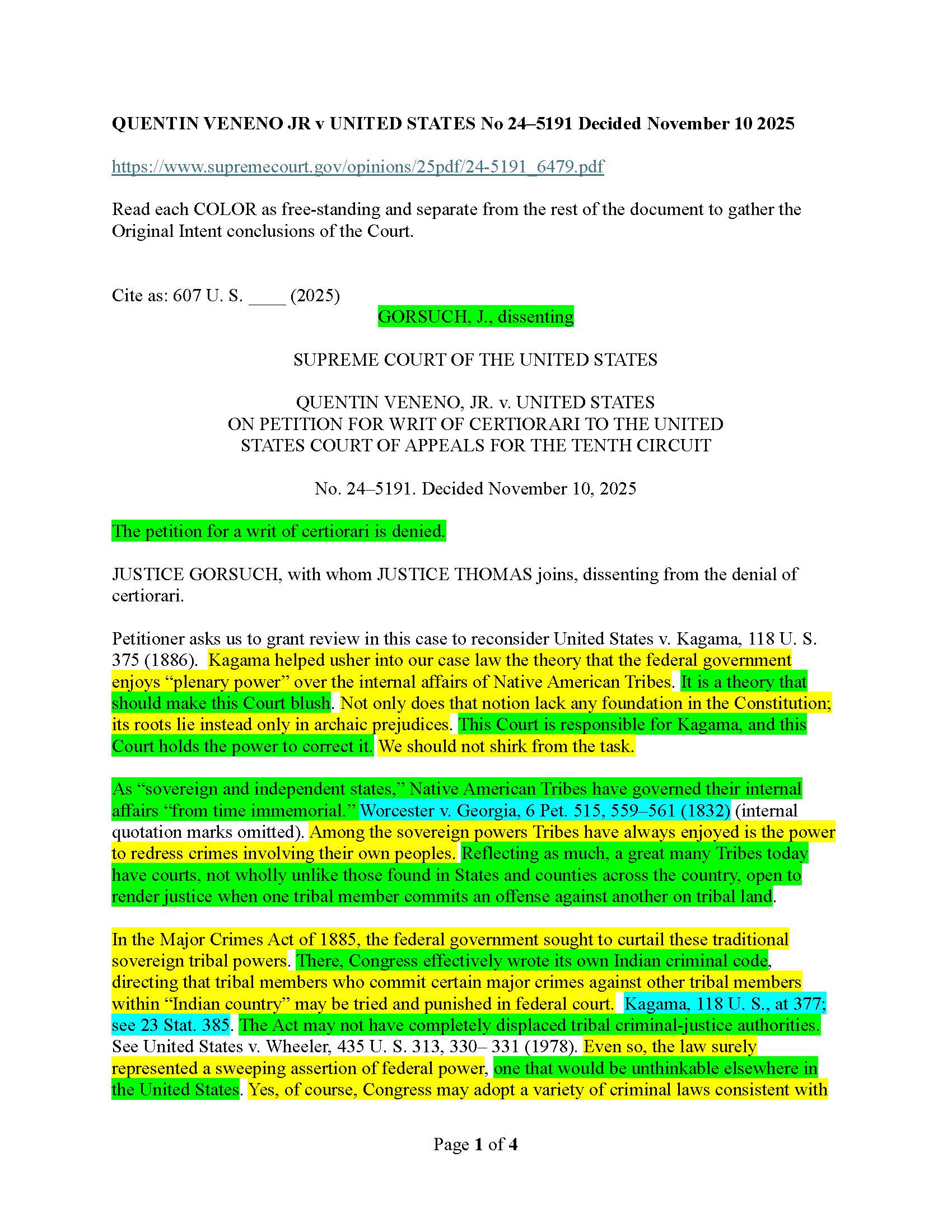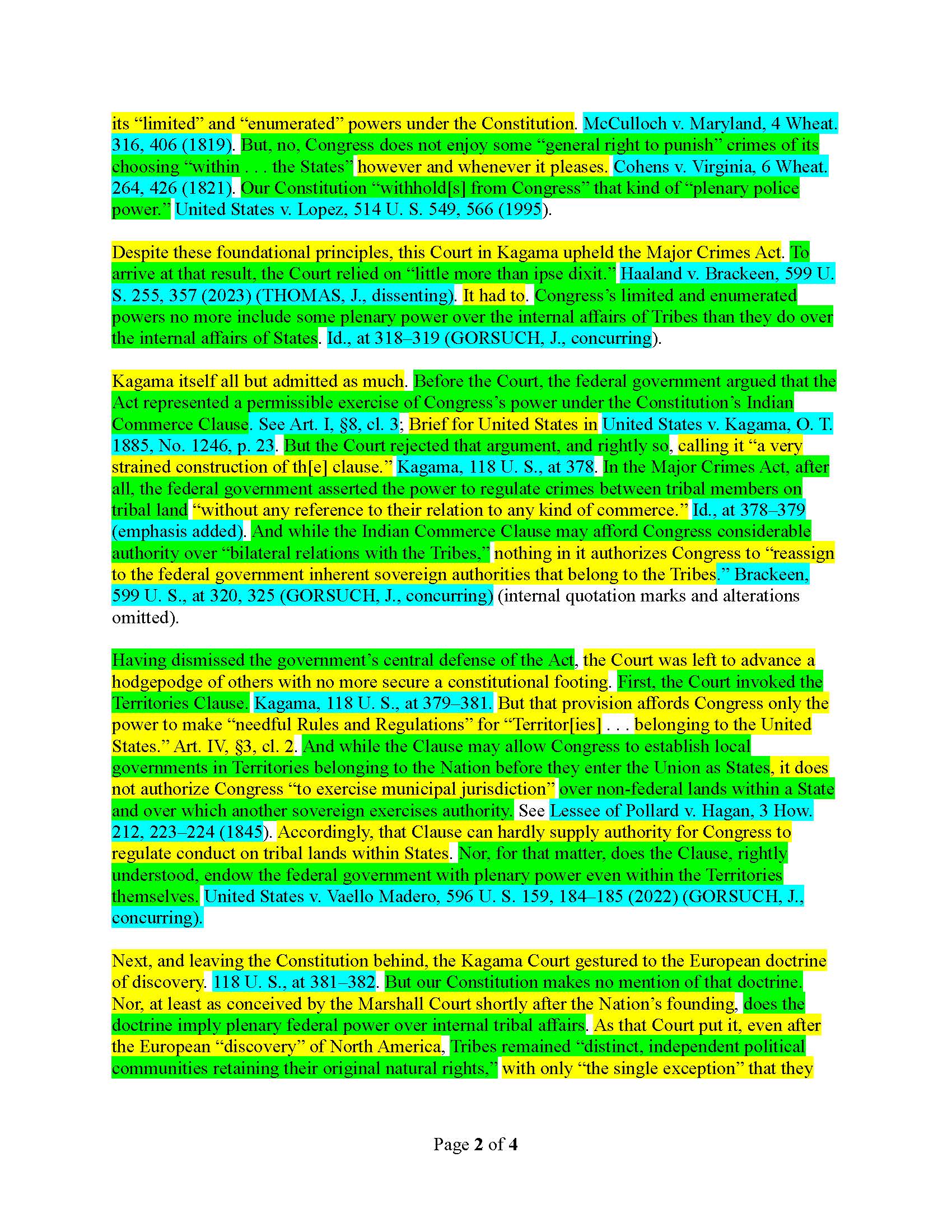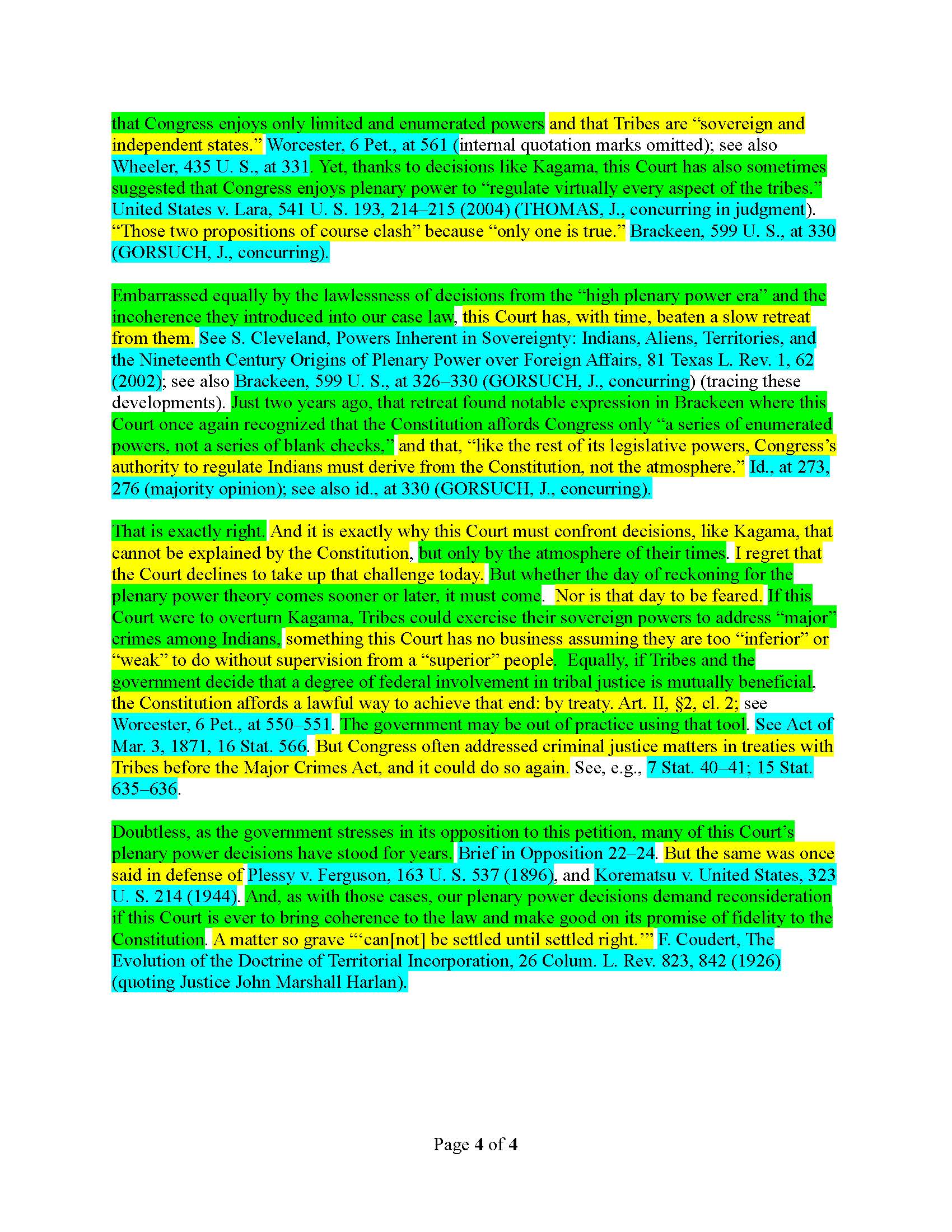Where is Plenary Power Over Indian Affairs in the Current Constitution of the United States?
© TCNPress.Org
By Line Fort Smith, AR
11/16/2025
Where is Plenary Power over Indian Affairs in the current Constitution of the United States?
The Constitution of the United States became the law of the land on June 21, 1788, after New Hampshire became the ninth state to adopt it.
After a word-by-word, phrase-by-phrase, and sentence-by-sentence analysis of the Constitution, the word “plenary” does not appear anywhere within the document. In American jurisprudence, before 1886, Congress never argued or suggested that it had the constitutional authority of “Plenary Power” over Indian Affairs.
Are there any enterprising young Indian Lawyers wanting to make a name for themselves? The Chickamauga Nation would be more than happy to be your client for this battle.
The current makeup of the Court would appear to be favorable to overturn Stare Decisis of the Kagama case not only from an originalist view but also a "fairness" to Tribes. at this current time there may be an opportunity to achieve a 7 - 2 opinion in the challenge. I cannot see Chief Justice John Roberts or Samuel Alito as willing to overthrow 150 years of "Indian Law" like McGirt did in 2020.
Justices Gorsuch and Thomas address Plenary Power and Kagama in their dissent in Quentin Veneno Jr. v United States case on November 10, 2025.




